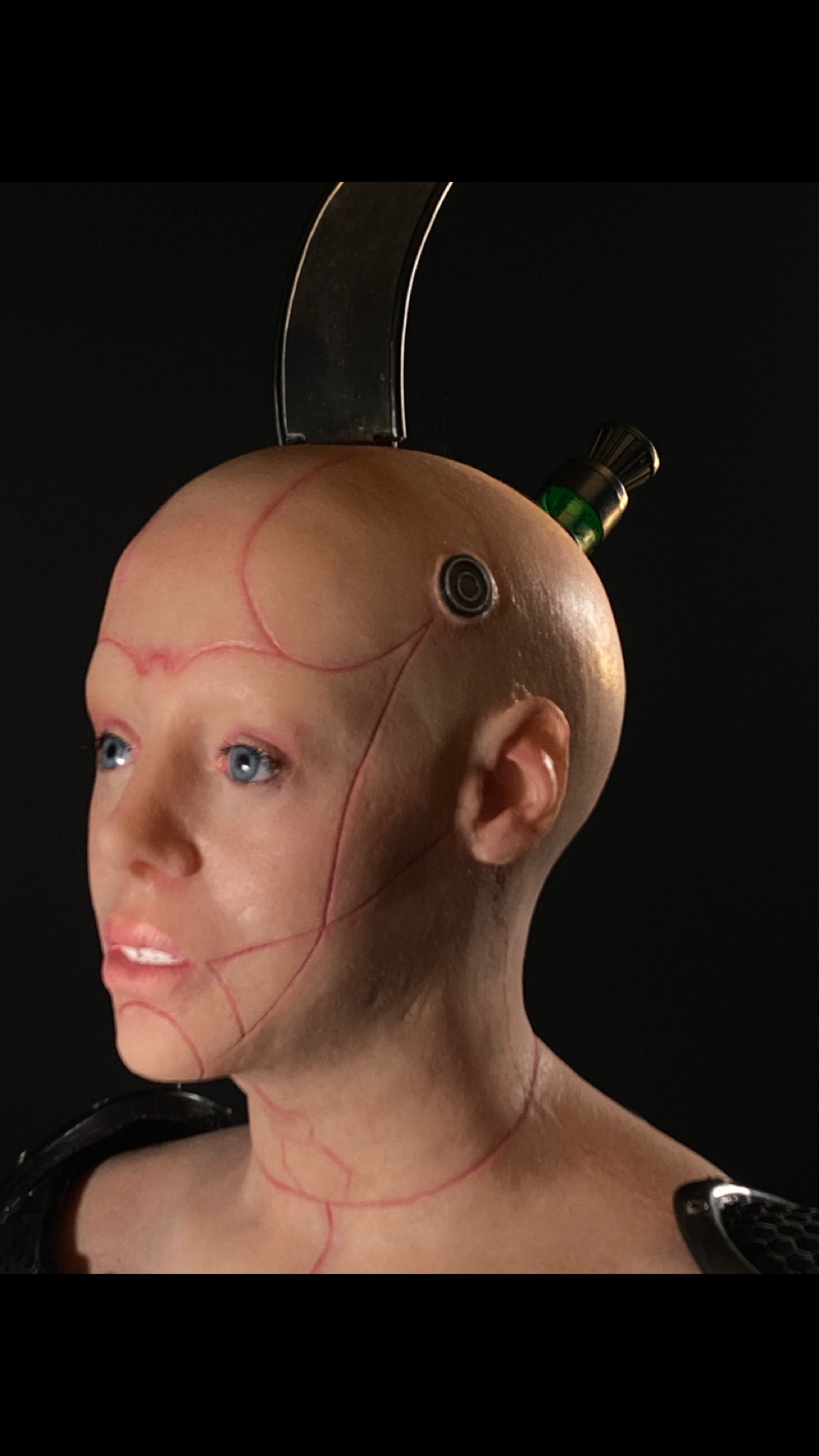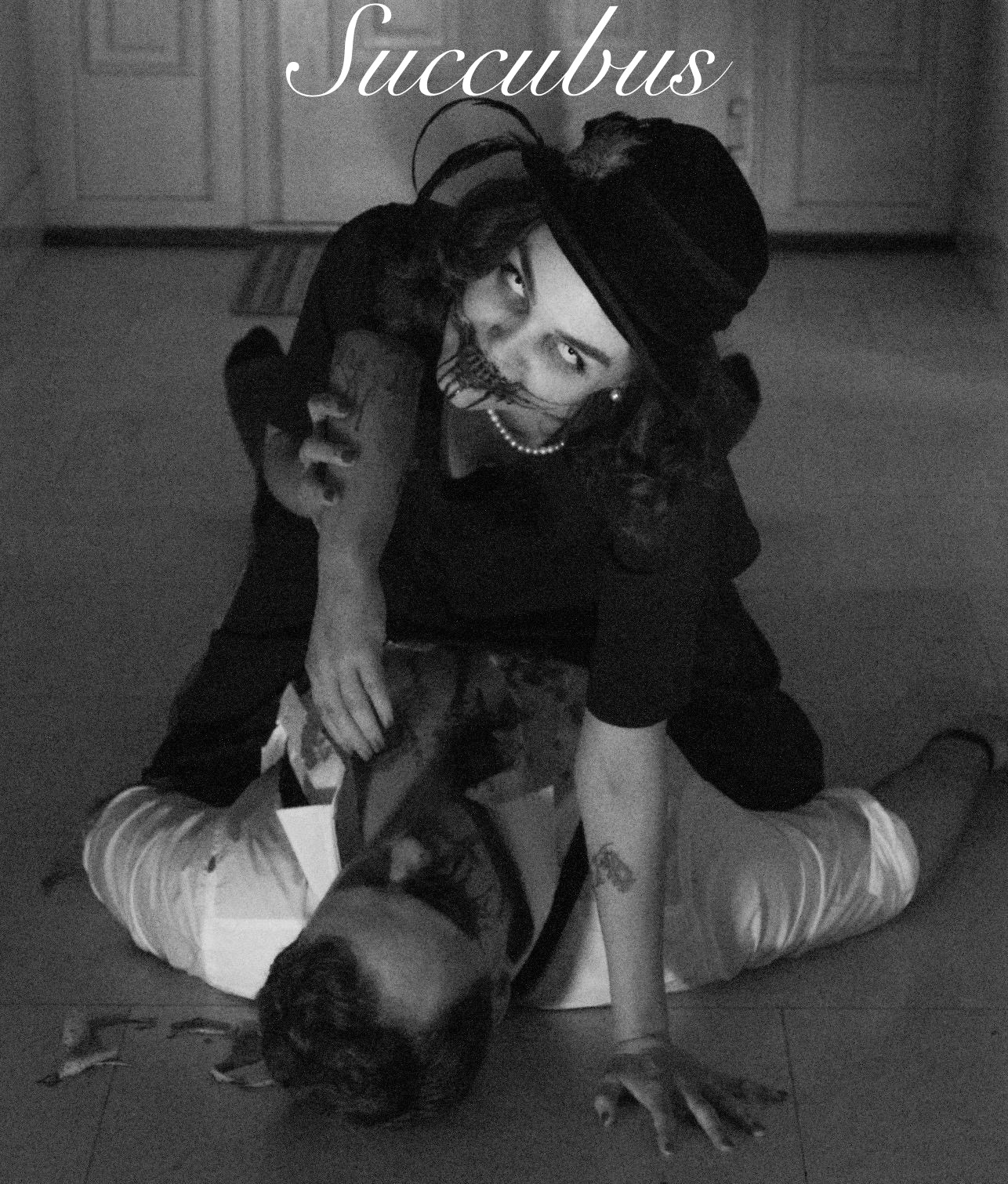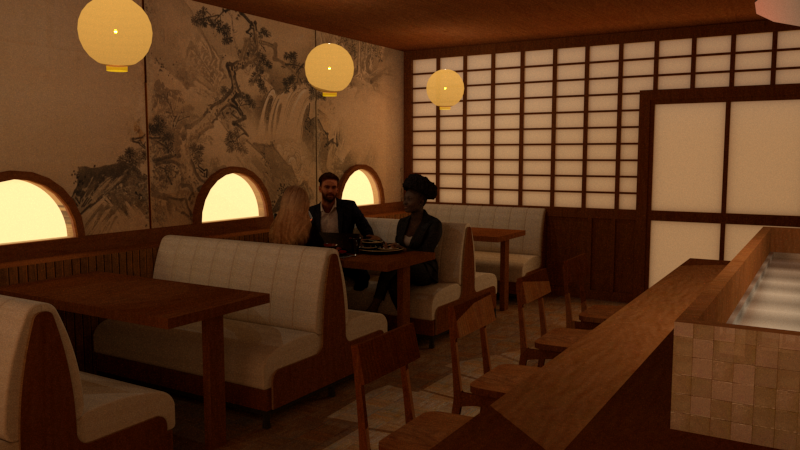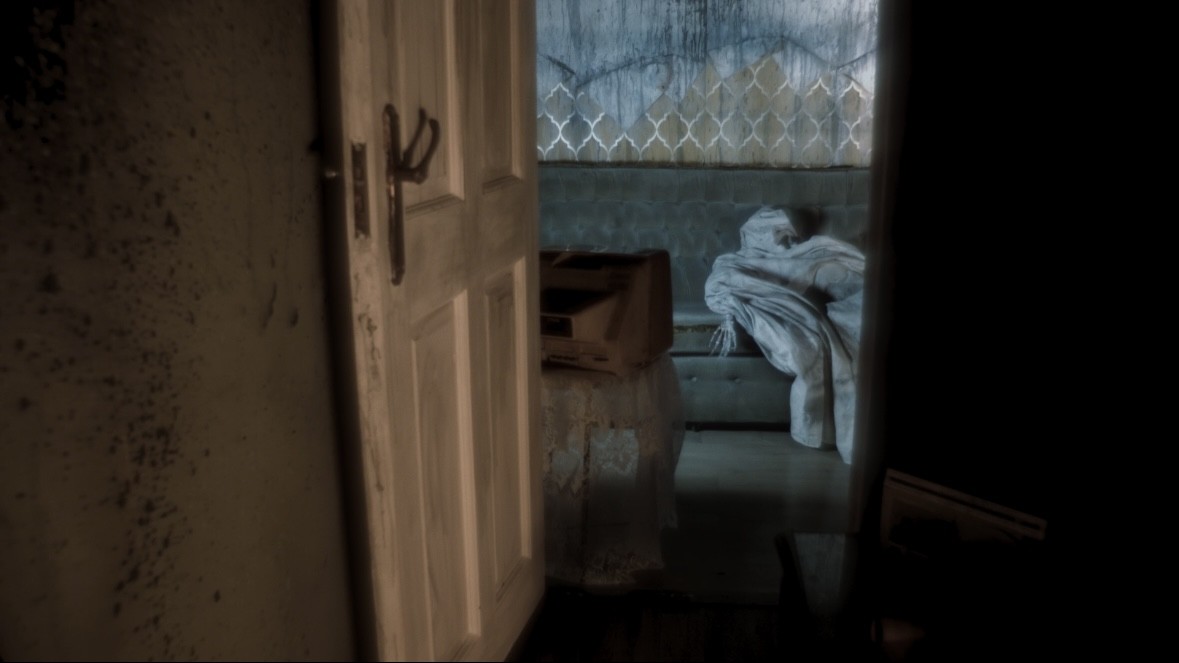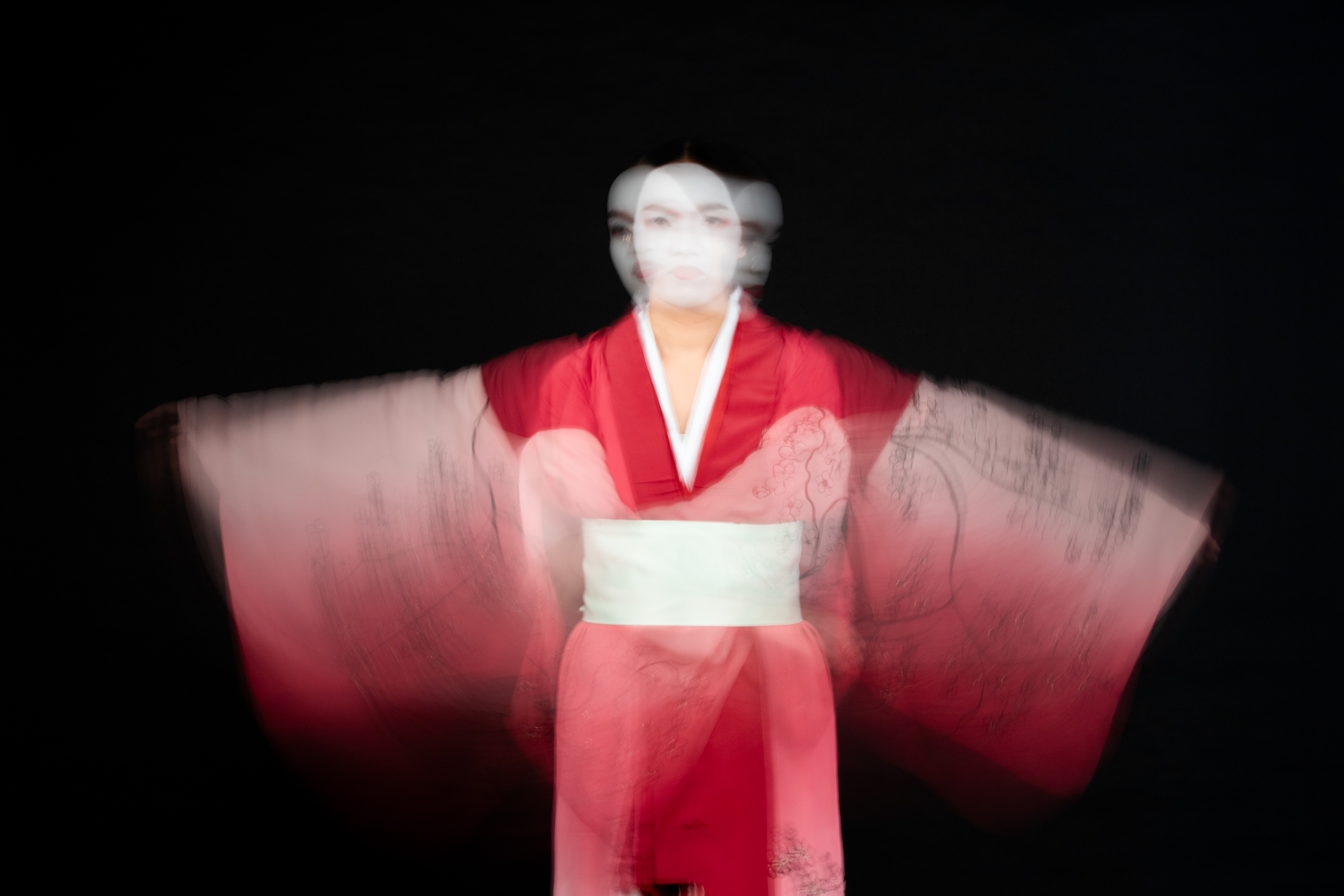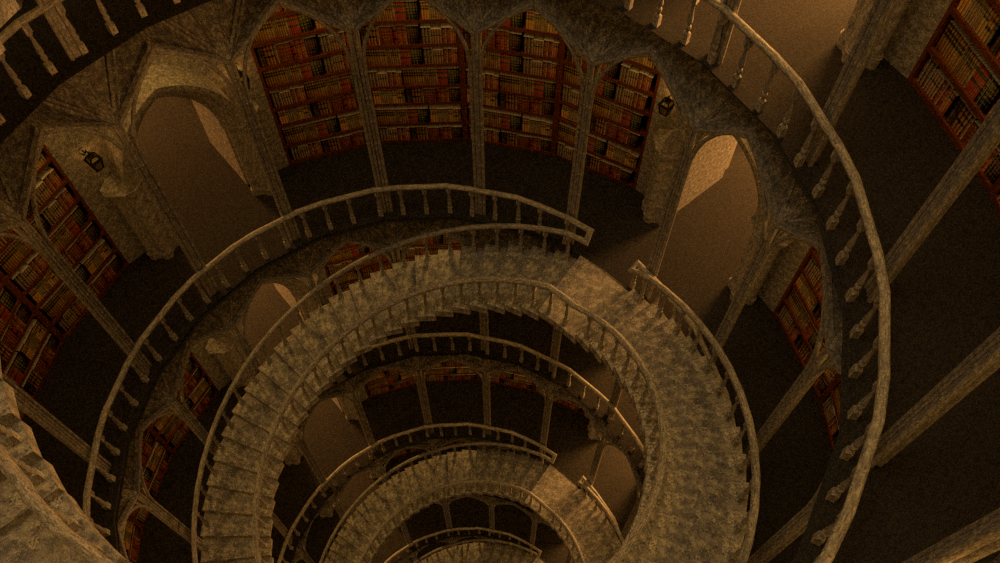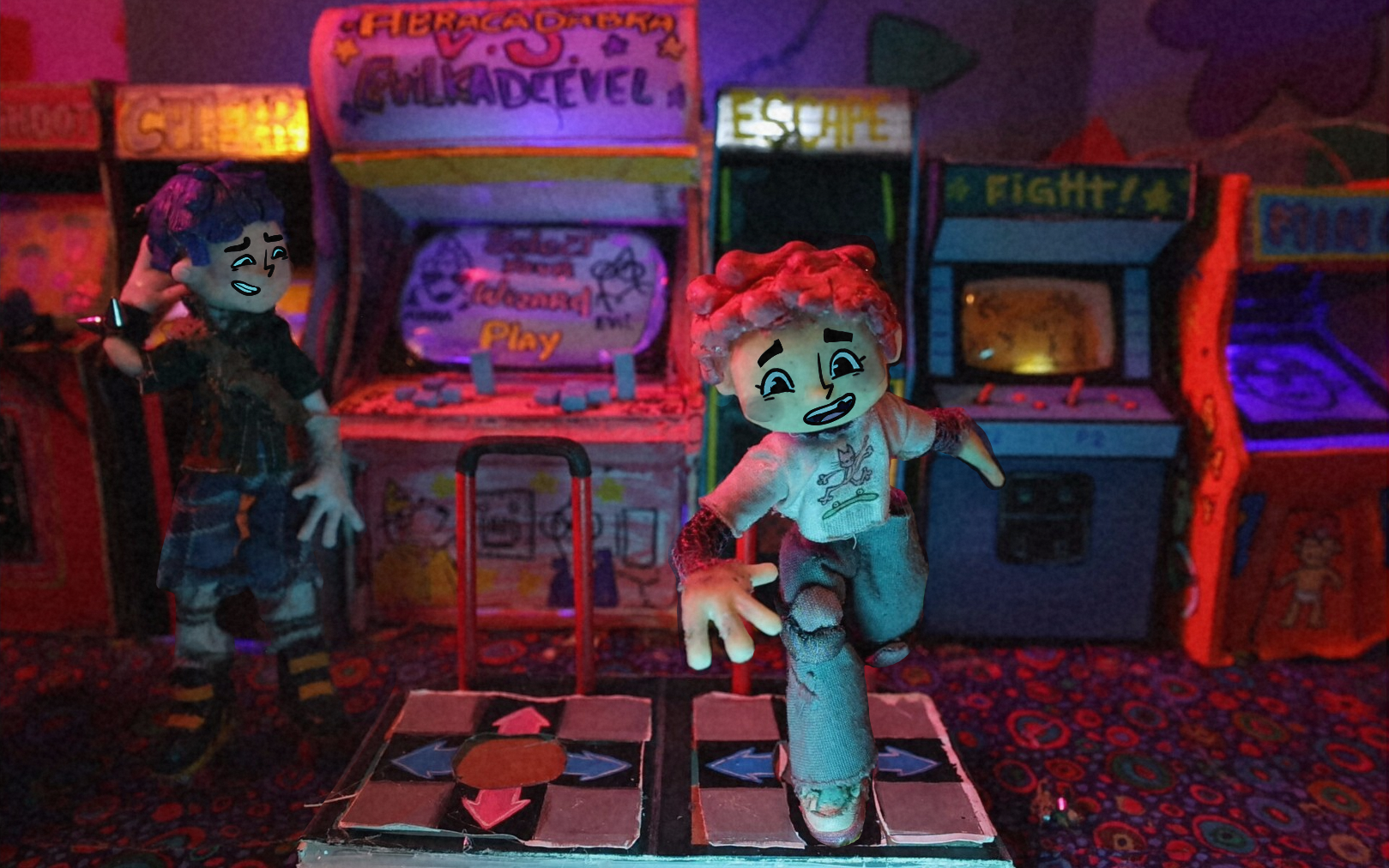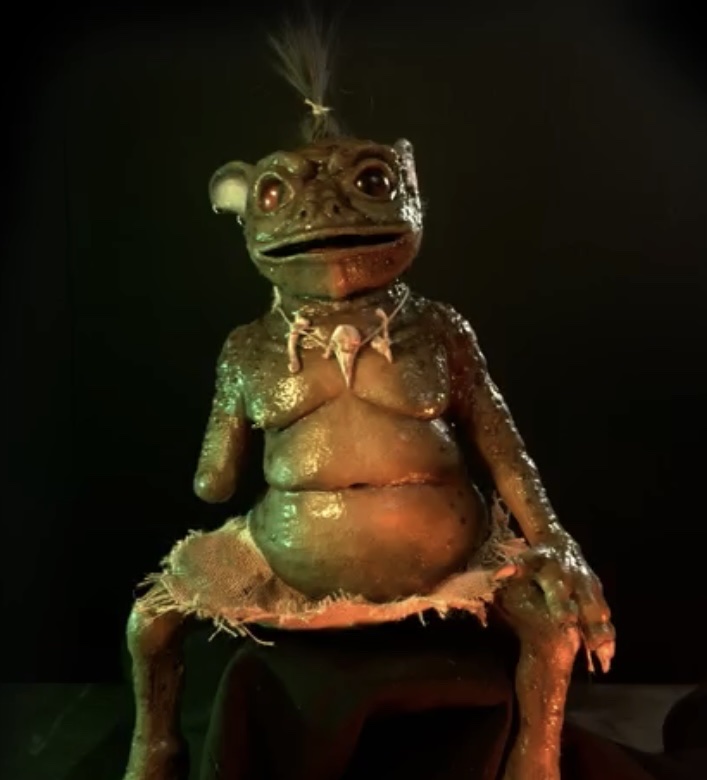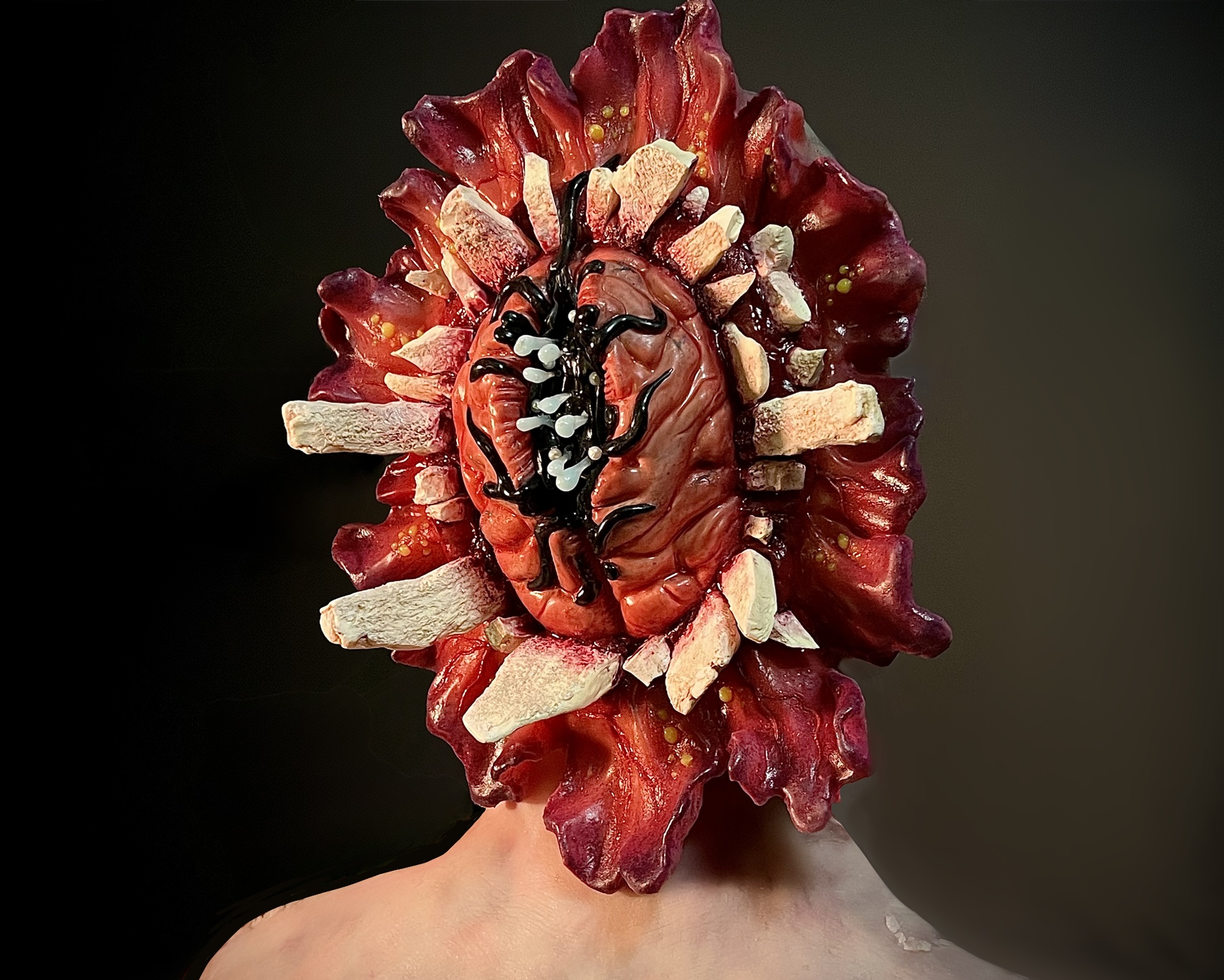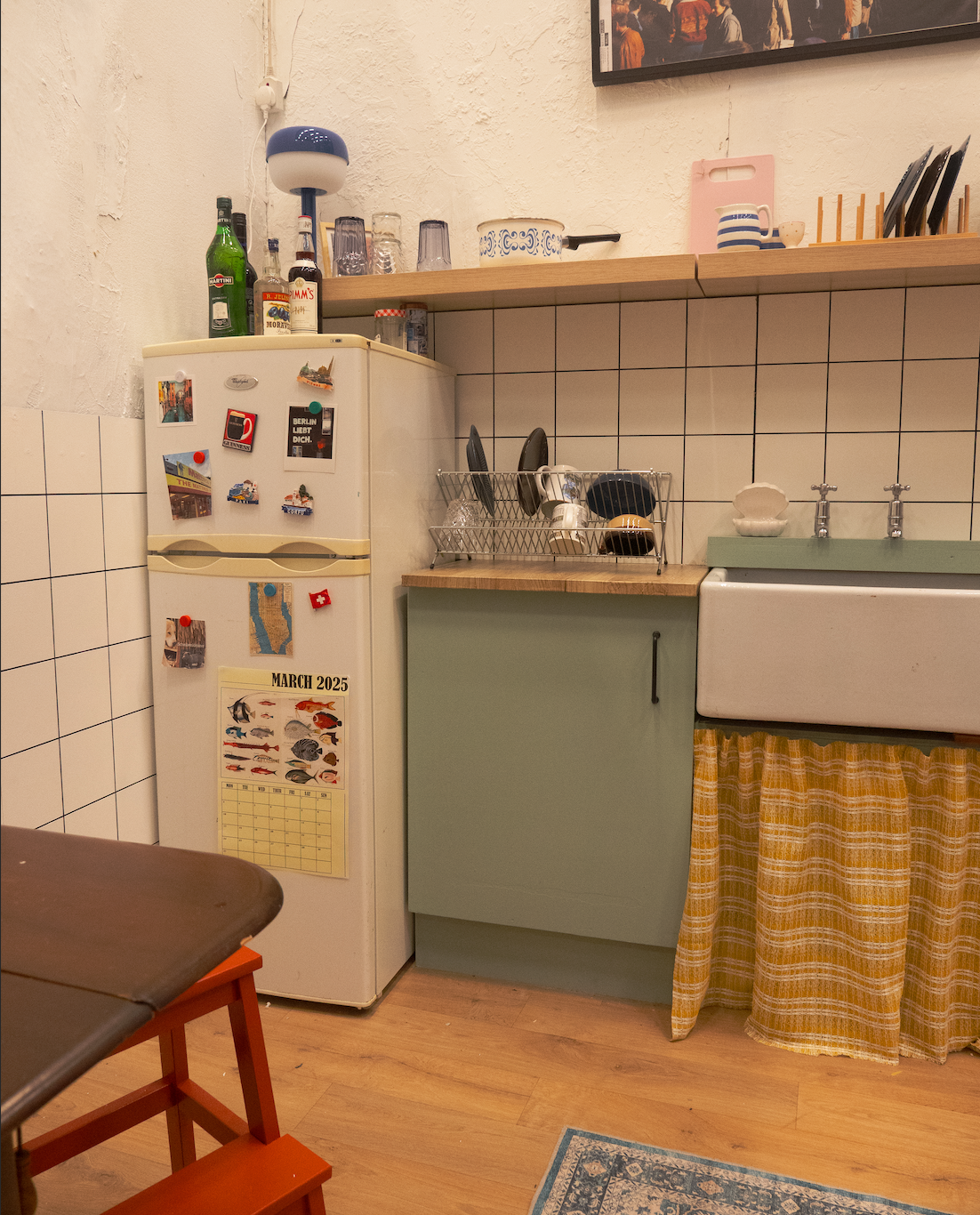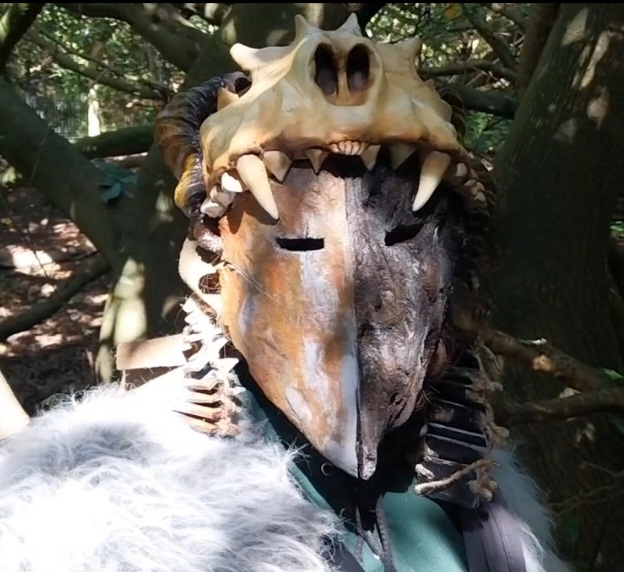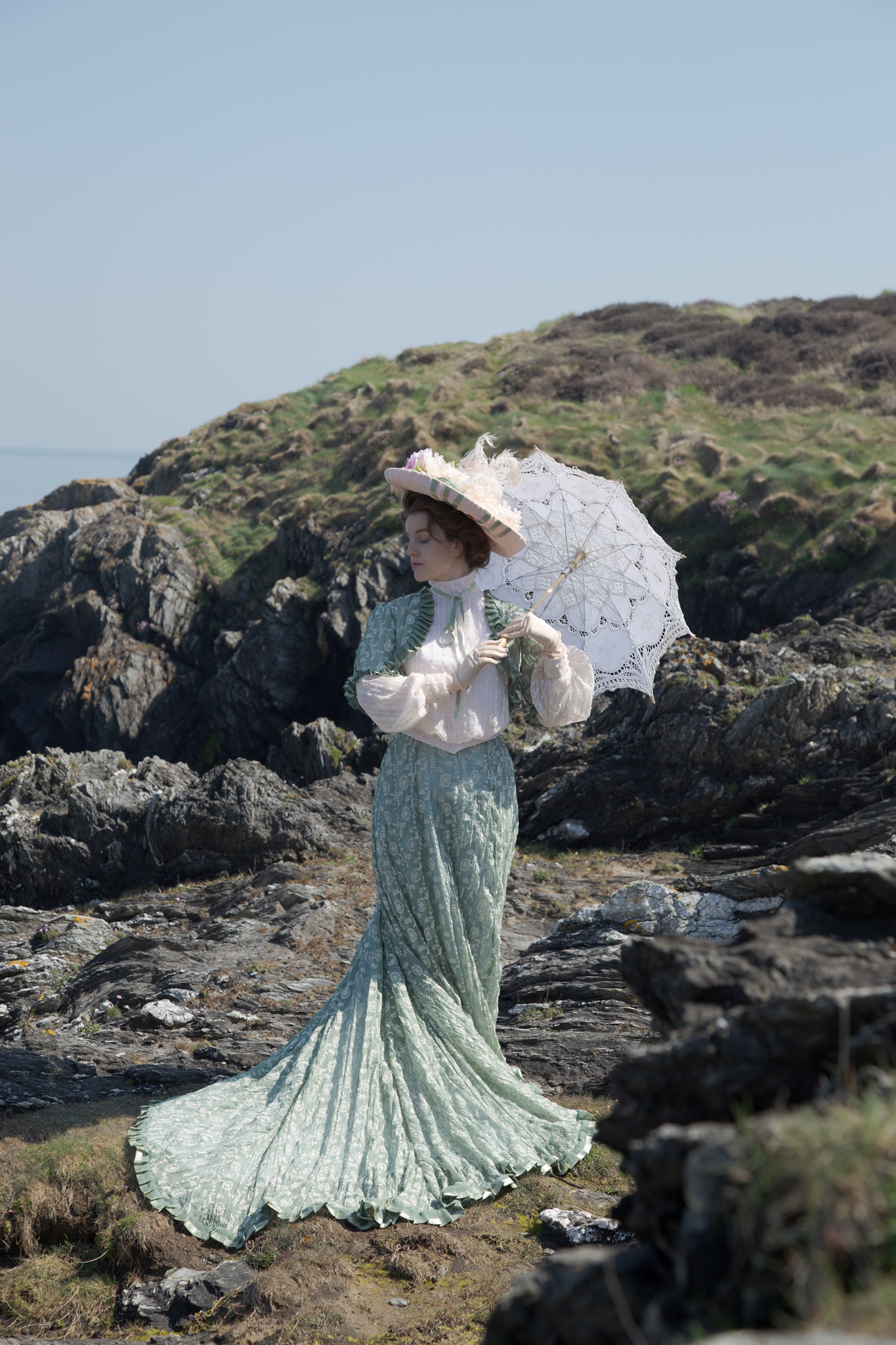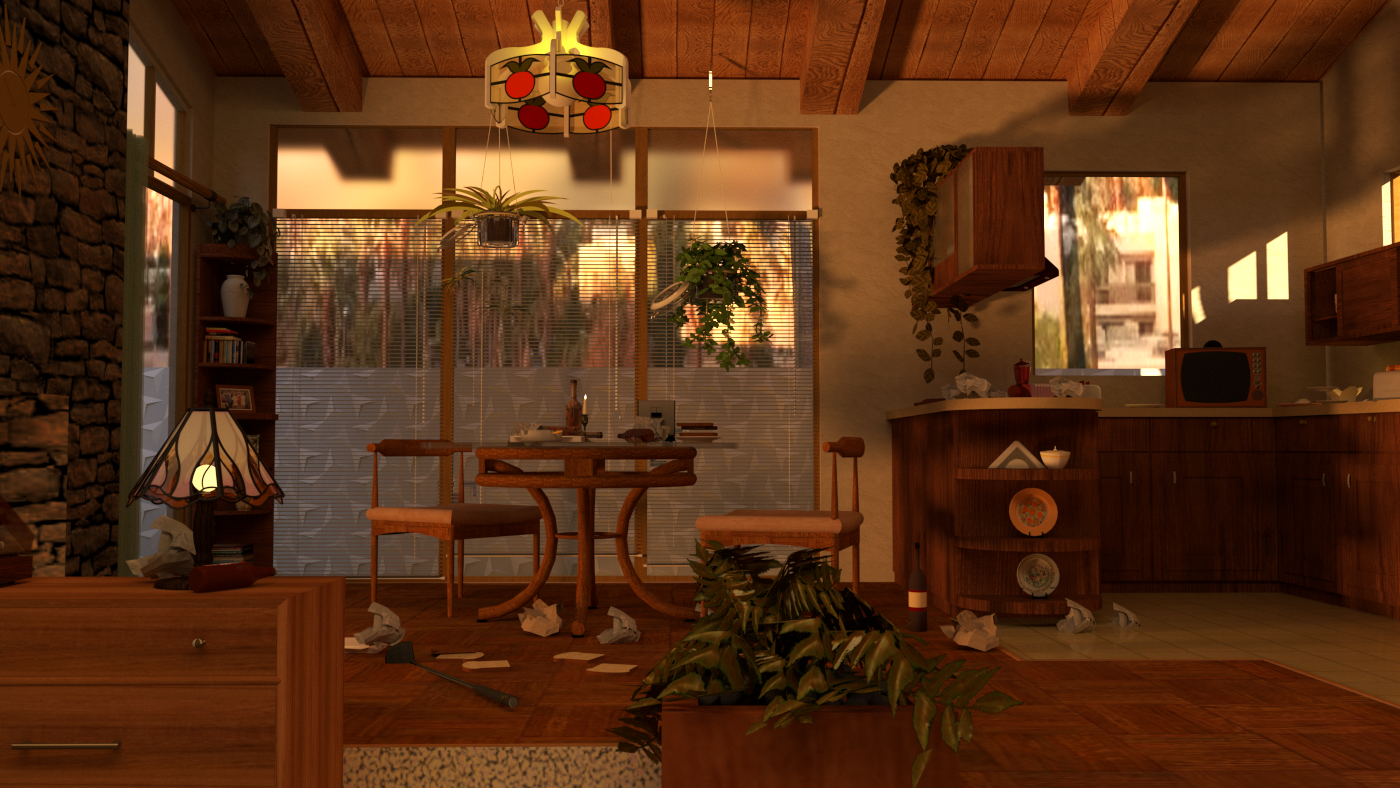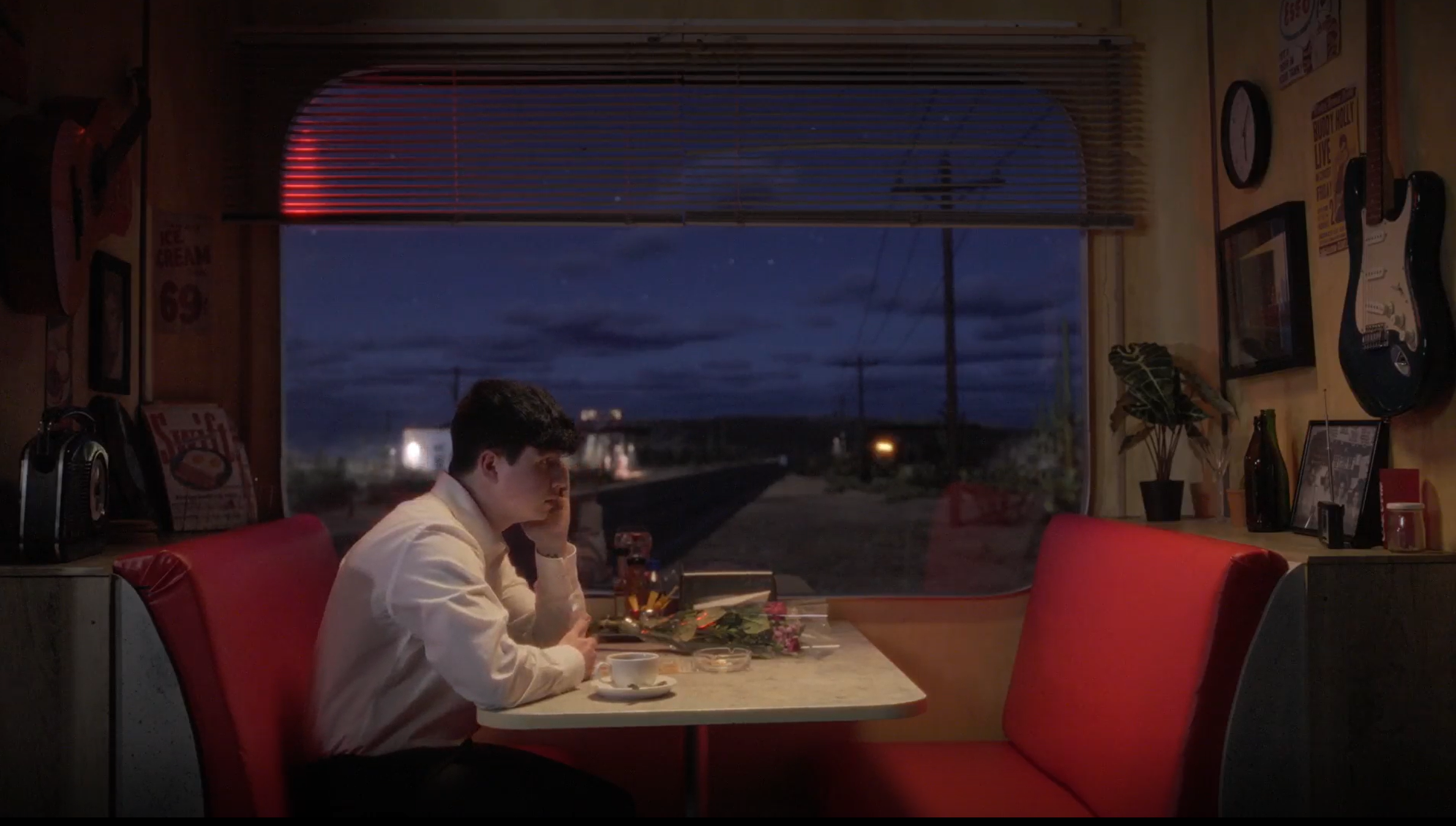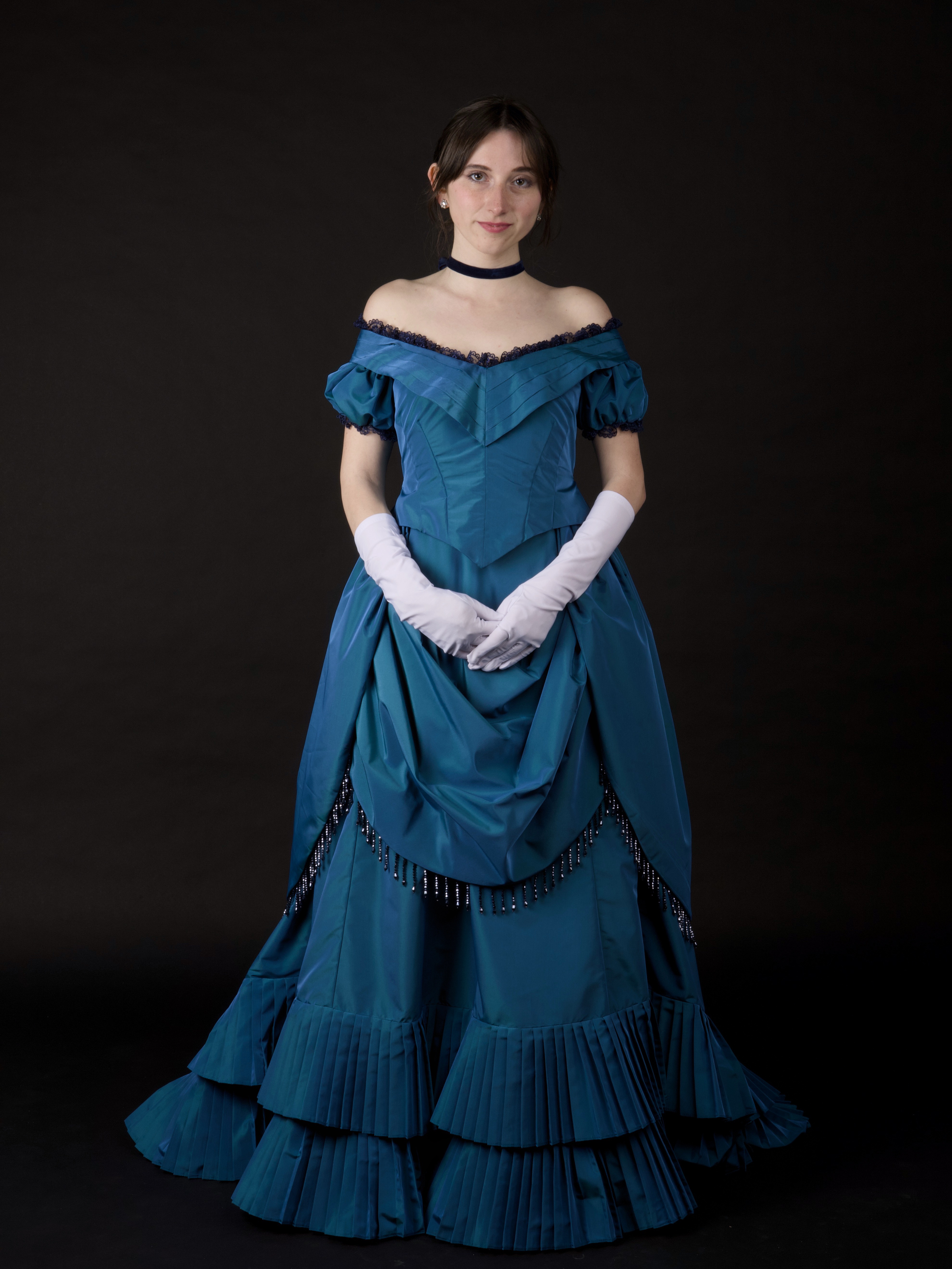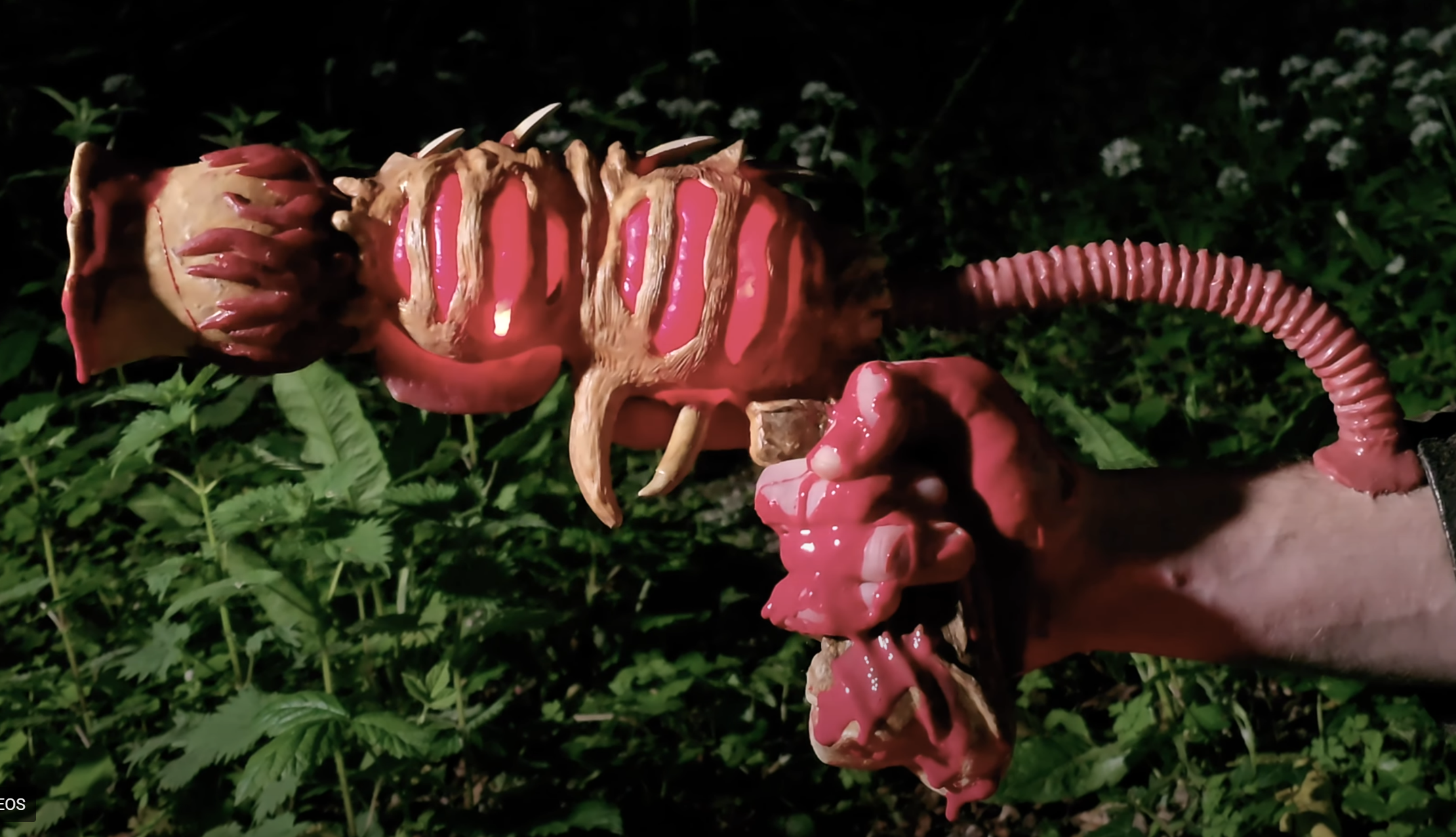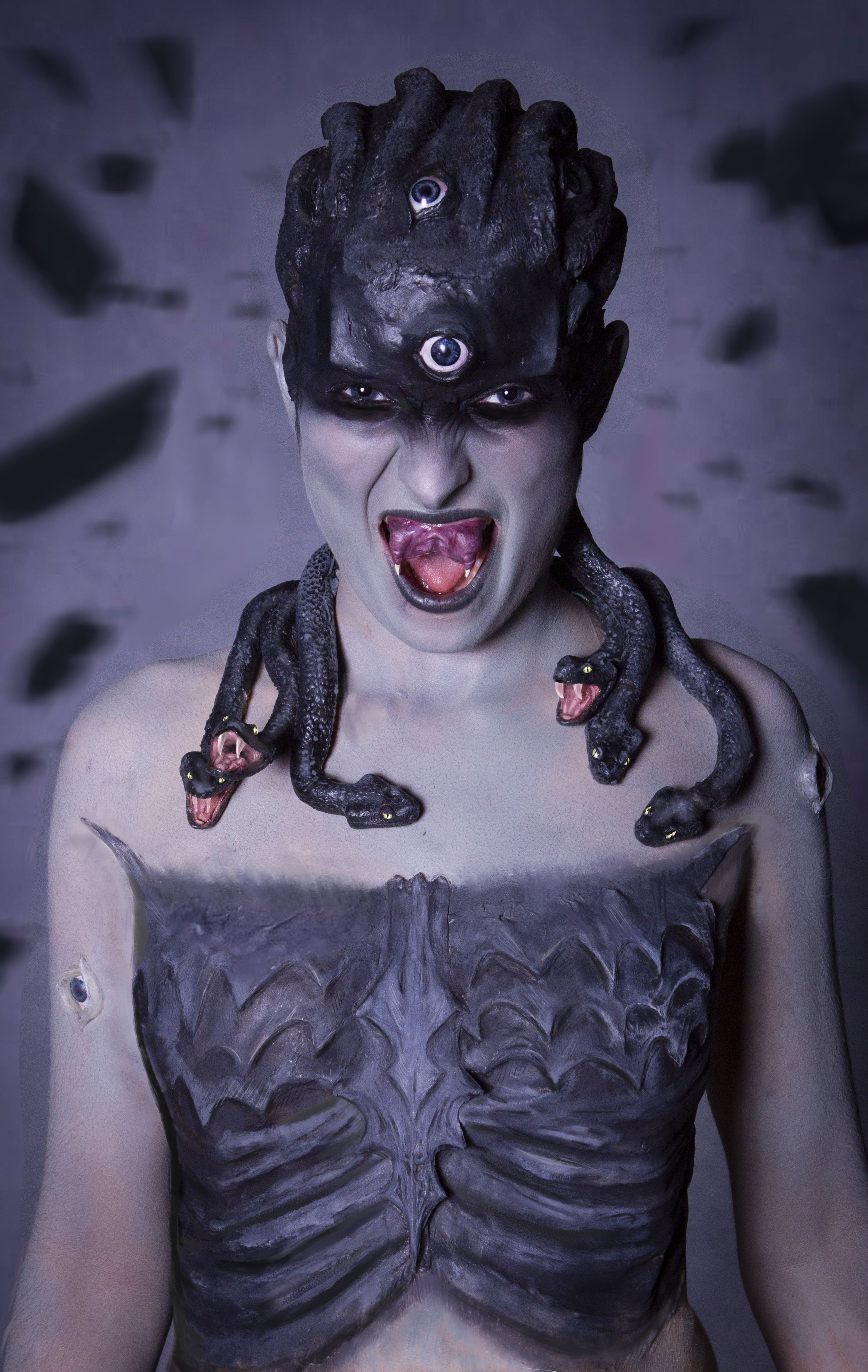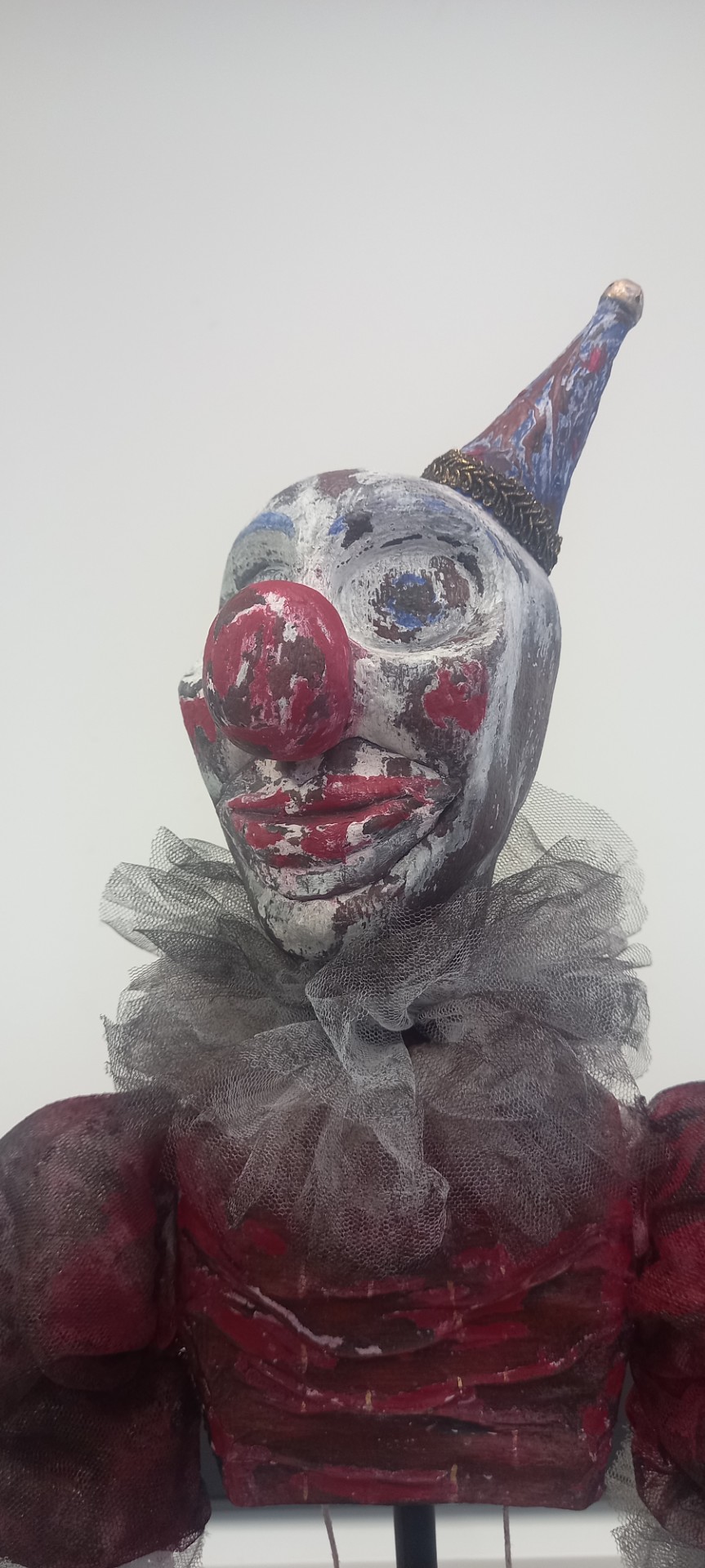David Walsh
This costume project reimagines the 14th-century poem 'Sir Gawain and the Green Knight' through a lens of Byzantine influence and surrealist film. Inspired by medieval manuscripts, Byzantine mosaics, religious pageantry, and the stark surrealism of films like 'The Seventh Seal', 'Marketa Lazarová', and 'On the Silver Globe'. This project deals with dichotomy and contradiction; whether it be the sacred and the grotesque, or even the knightly and the human.

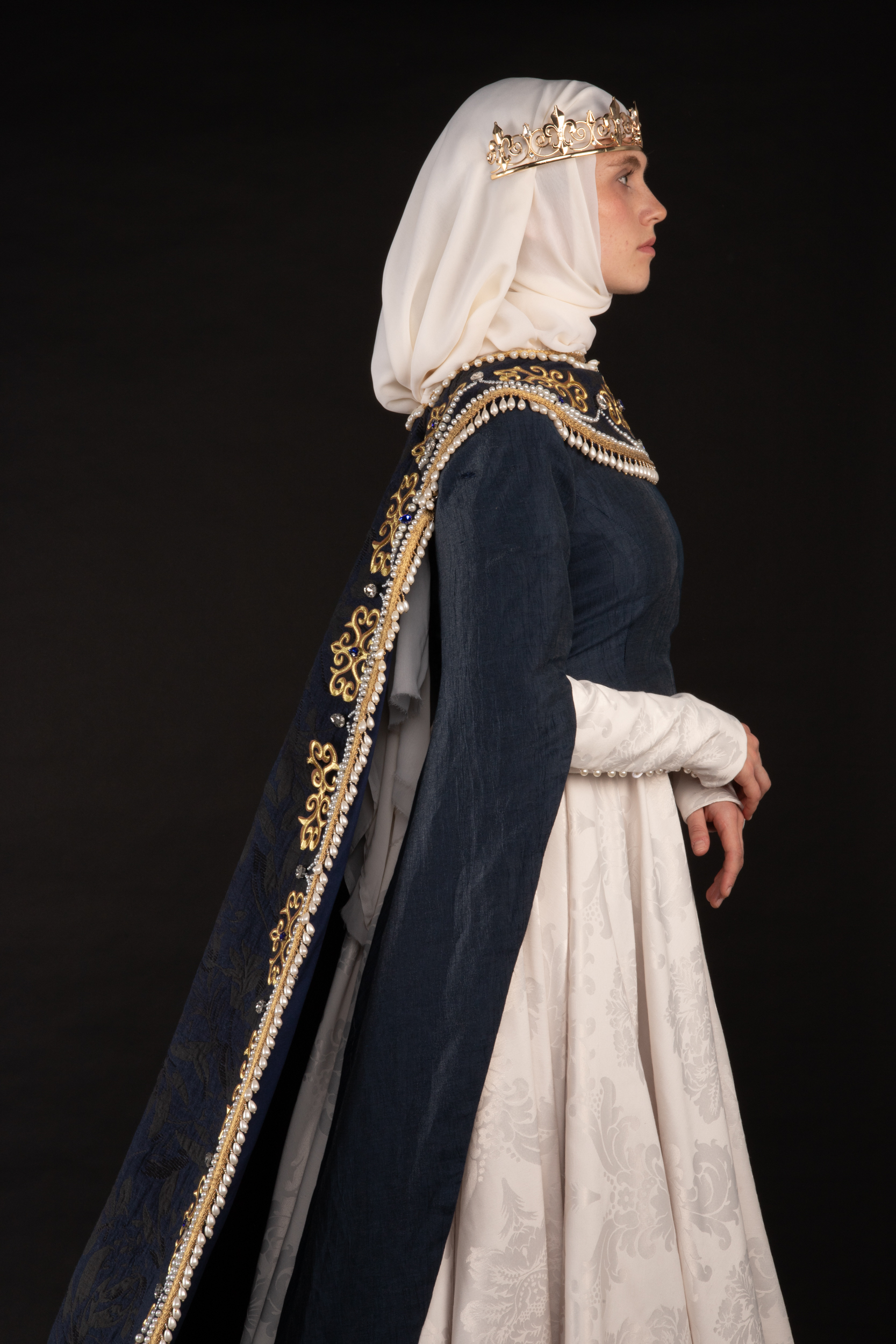
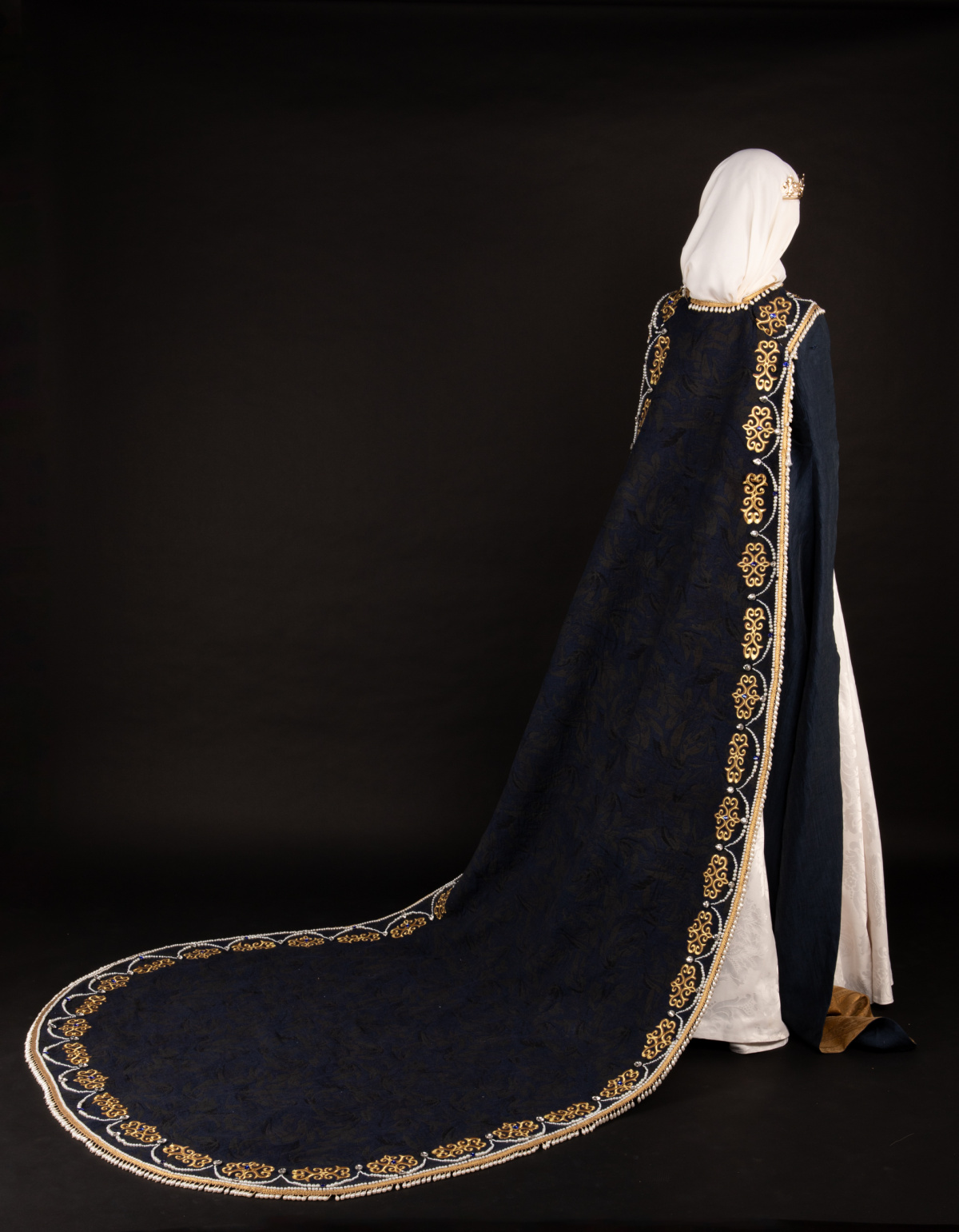
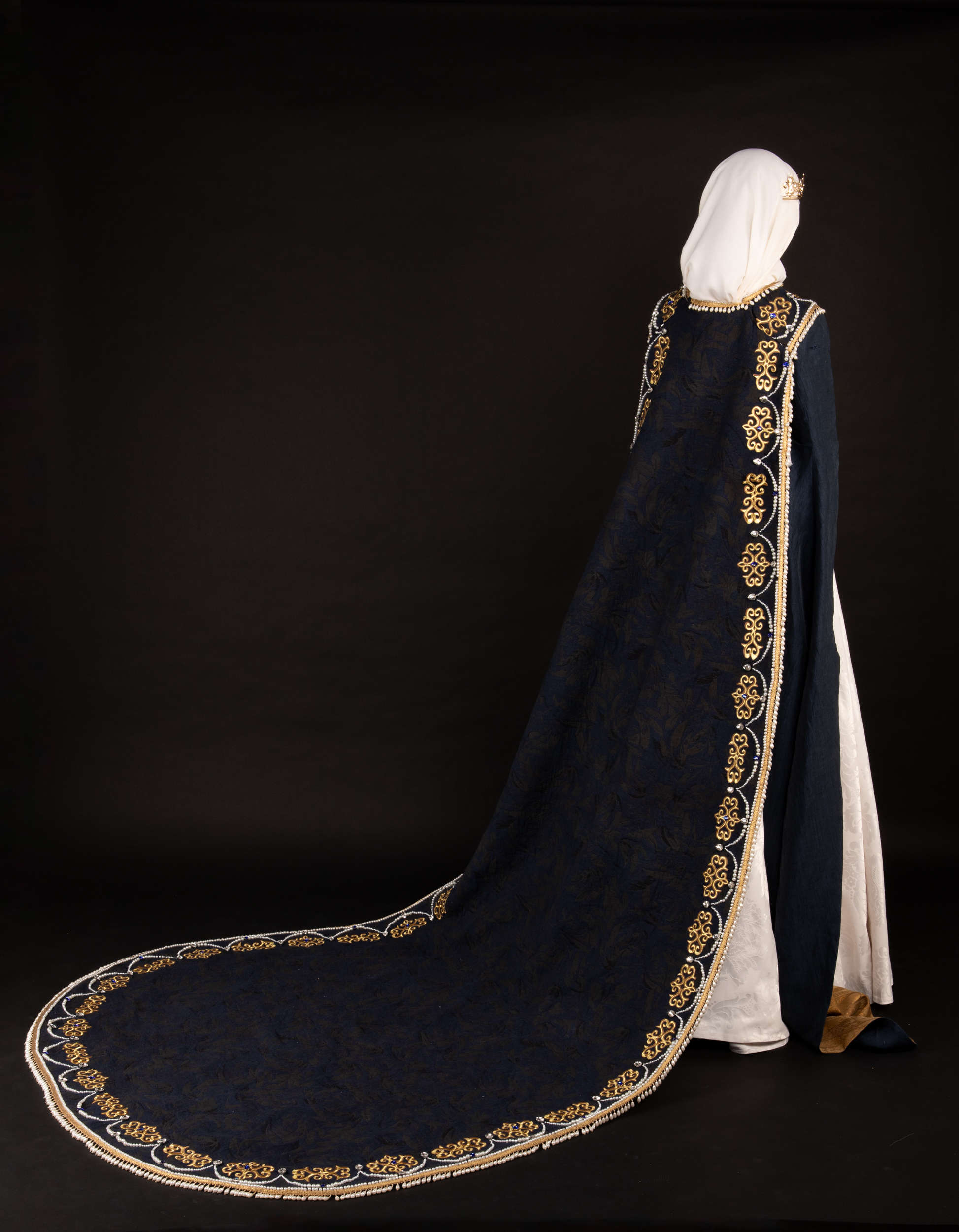

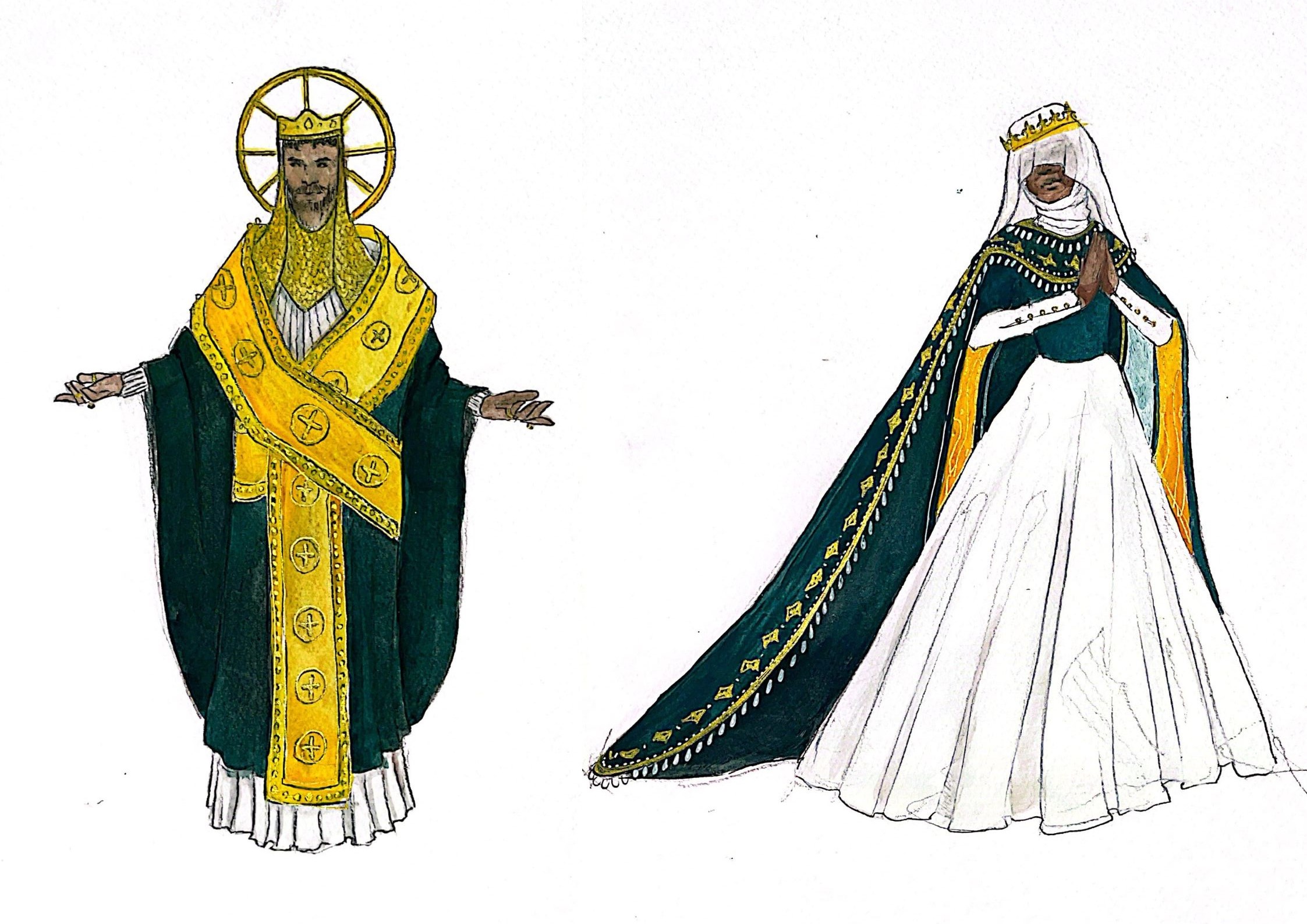

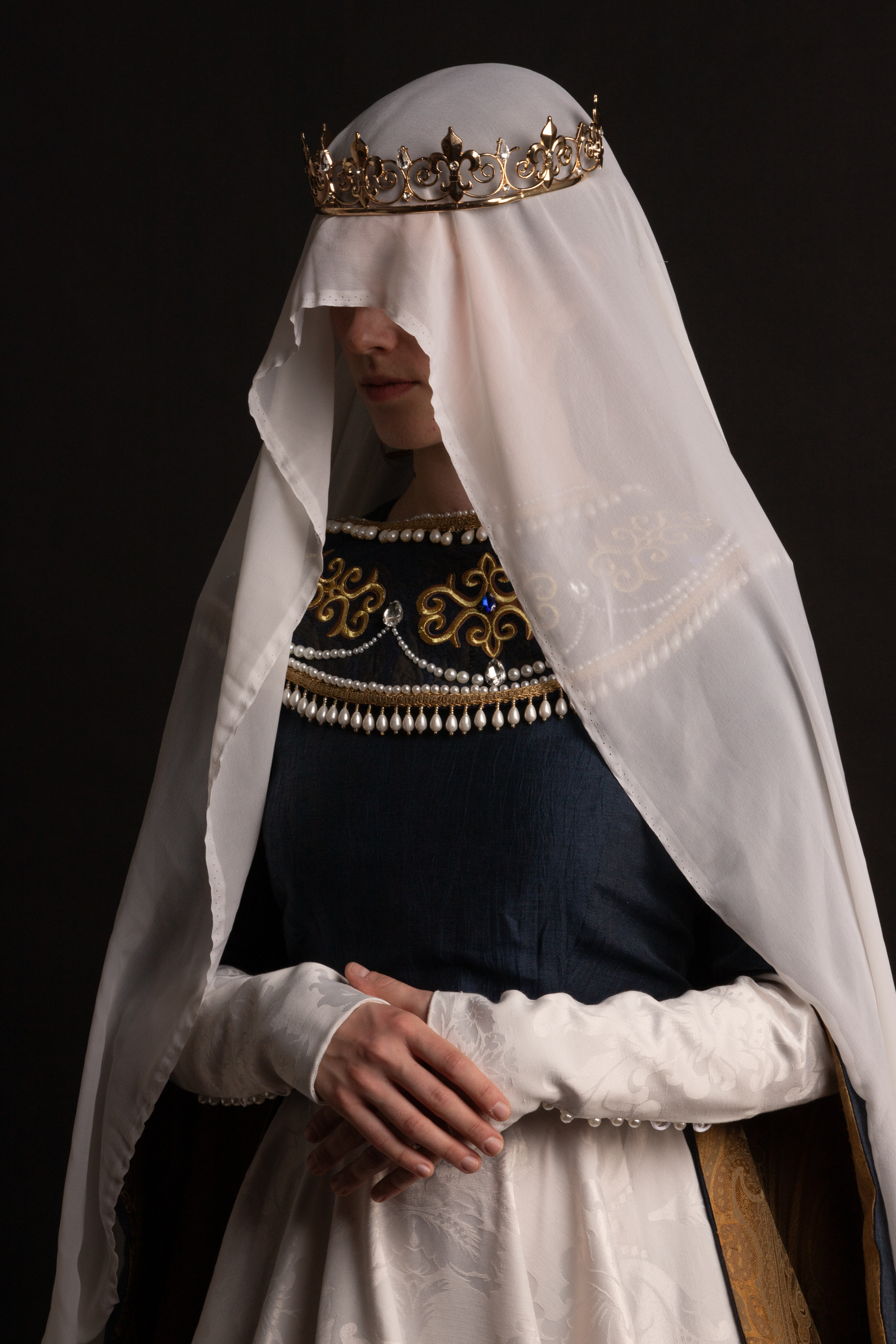

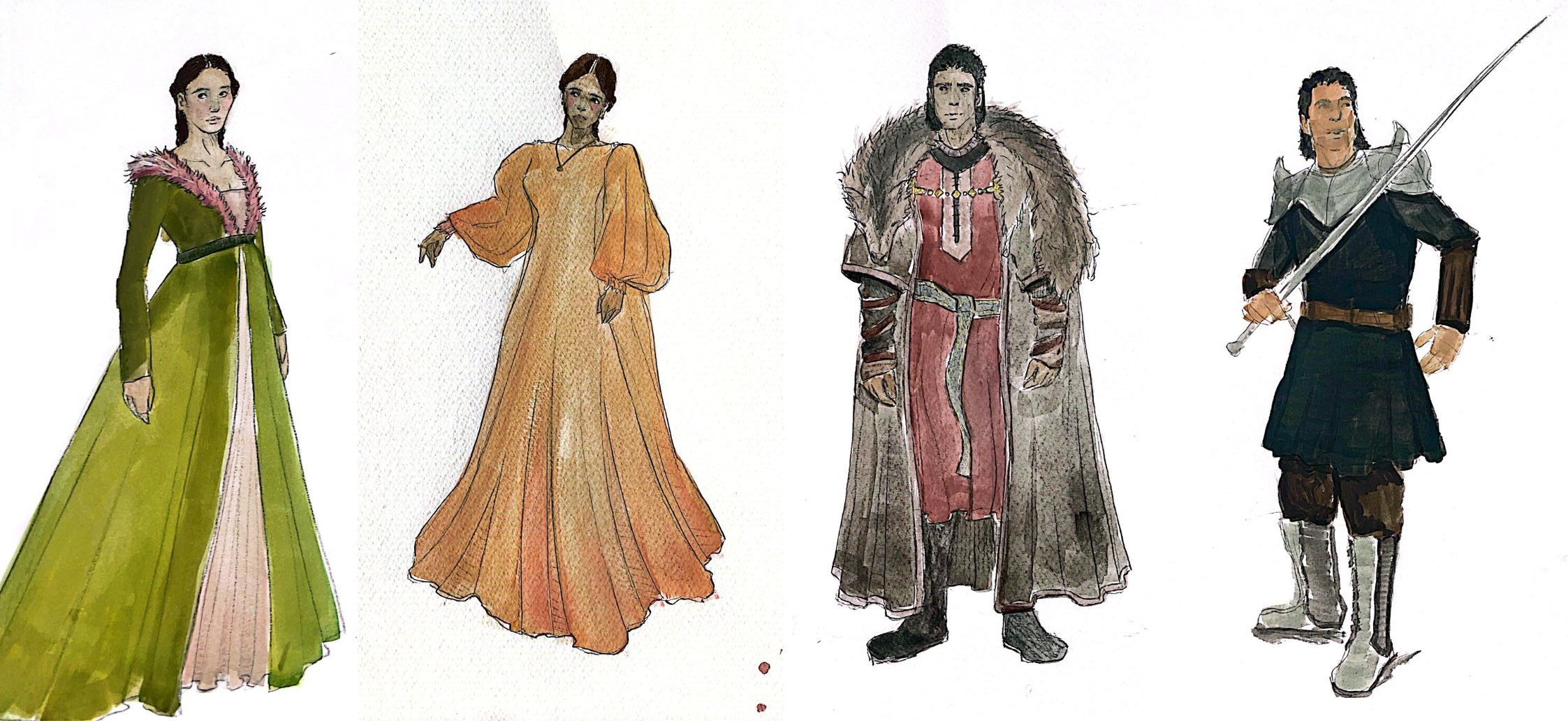
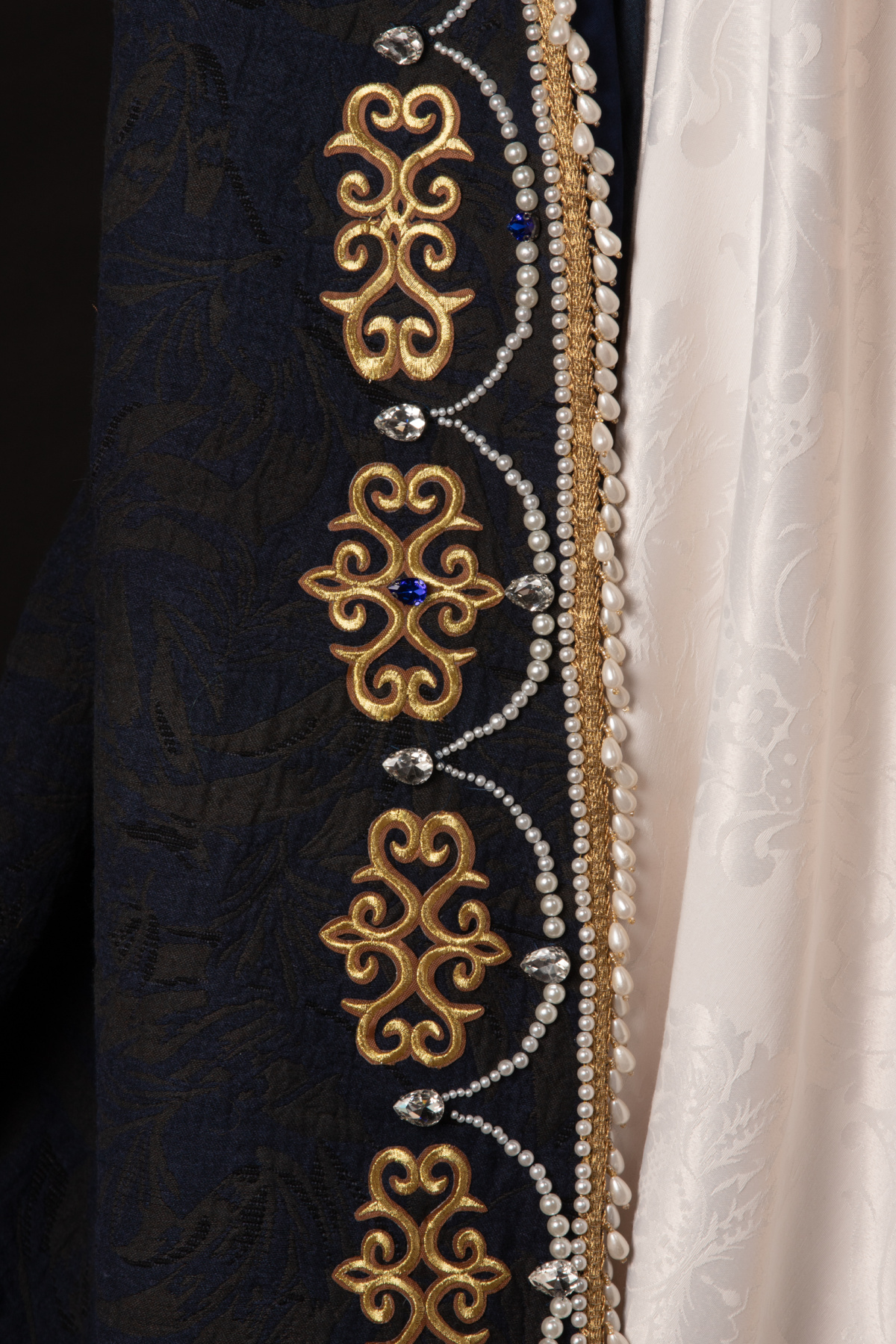

This Major Project takes the 14th-Century poem 'Sir Gawain and The Green Knight' places it in a world that draws from medieval symbolism, surrealist film, and the tension between Christian authority and pagan survival. I wanted the project to stay true to the source material by having a late medieval English influence, while also breaking away from the source material with its Byzantine iconographic influences. The project interprets costume not merely as character dress, but as a medium of moral and spiritual identity, as well as a focus on performance.
This structured/wild duality is expressed visually by contrasting the religious formality of King Arthur’s court with the organic, Pagan ideologies of The Green Knight and the wilderness. Garments in the courtly world reference Byzantine ecclesiastical costume, with their rigid silhouettes, ceremonial layering, and gold-beaded ornamentation. I wanted to invoke a sort of unwavering, divine kingship and hierarchy. This contrasts the wilderness aesthetic, which embraces decay, oxidised metals, fur, and anything that blurs the line between man and nature.
This thesis analyses the representation of women in horror films throughout history, and focuses specifically on three entries from the ‘Hellraiser’ film series as a medium to explore that. I analyse these films by exploring how the portrayal of female agency and sexuality on screen has changed over the years. I examine the criticism of different female characters in horror to contextualise societal attitudes towards women in their respective time periods. This thesis investigates how horror cinema exposes and mirrors societal anxieties surrounding women’s autonomy in the time period of each film. I achieve this by utilising seminal works from scholars such as Carol J. Clover and Laura Mulvey. By examining how female characters either comply with or resist the common tropes found within the horror genre, the thesis showcases an evolution of femininity and an understanding of the intersections of gender, sexuality, and cultural anxieties.
David Walsh is a 24-year-old Costume designer based in Dublin. As a recent Graduate of Costume Design (BA) in IADT, David has gained experience working on a variety of different projects building up his designing, technical and coordinating skills. He demonstrates a profound passion for costume design and character illustration, and hopes to pursue opportunities in the industry that allow him to expand his skills in this area.


